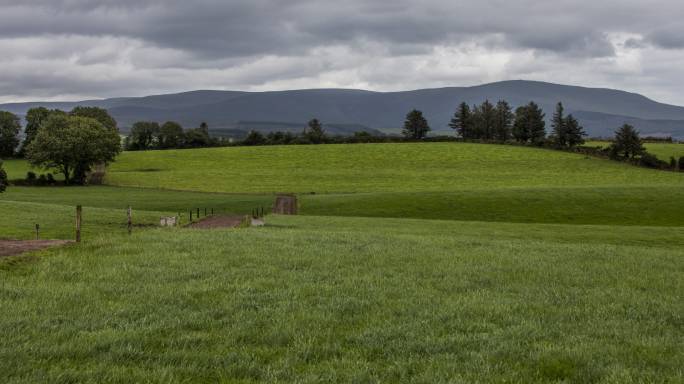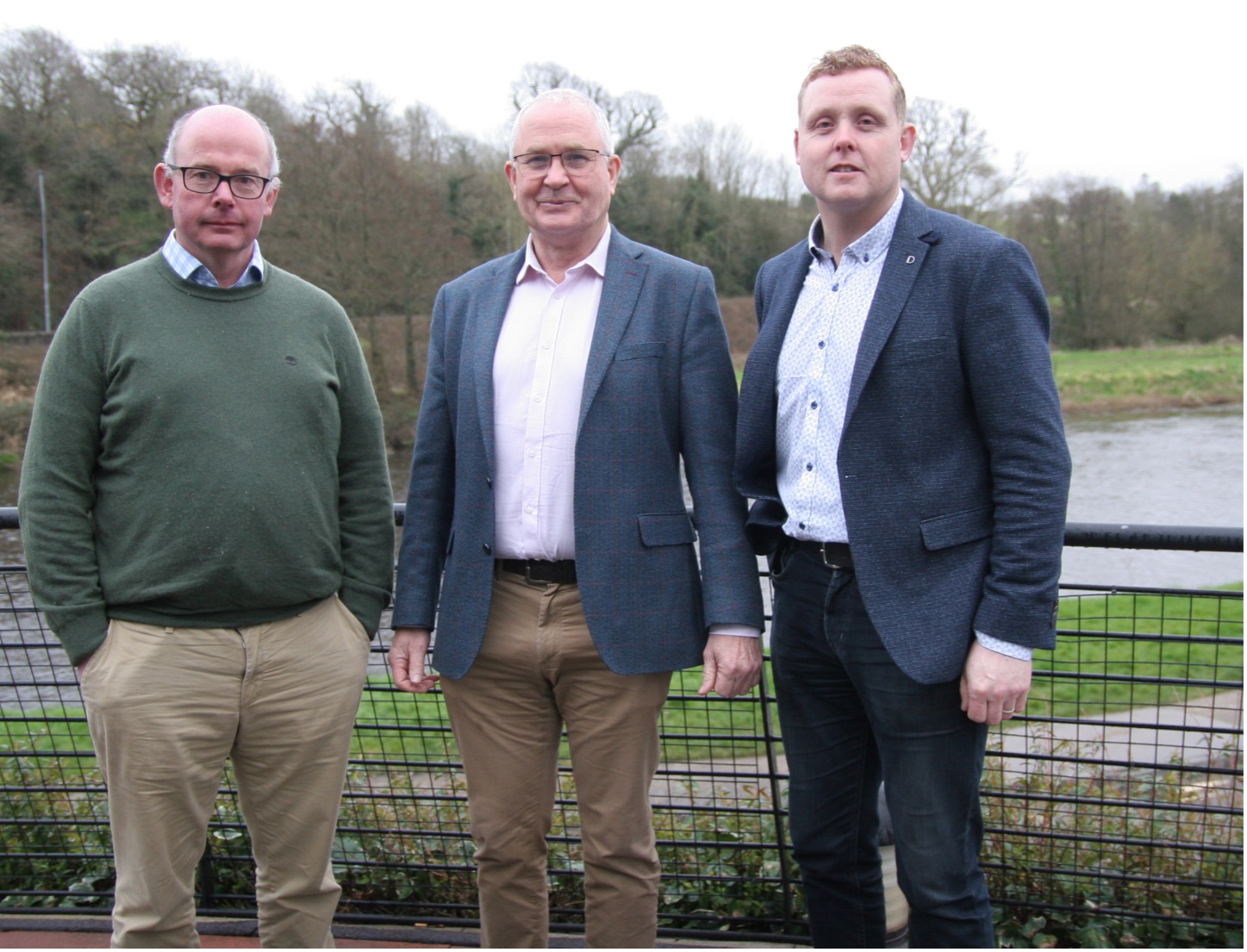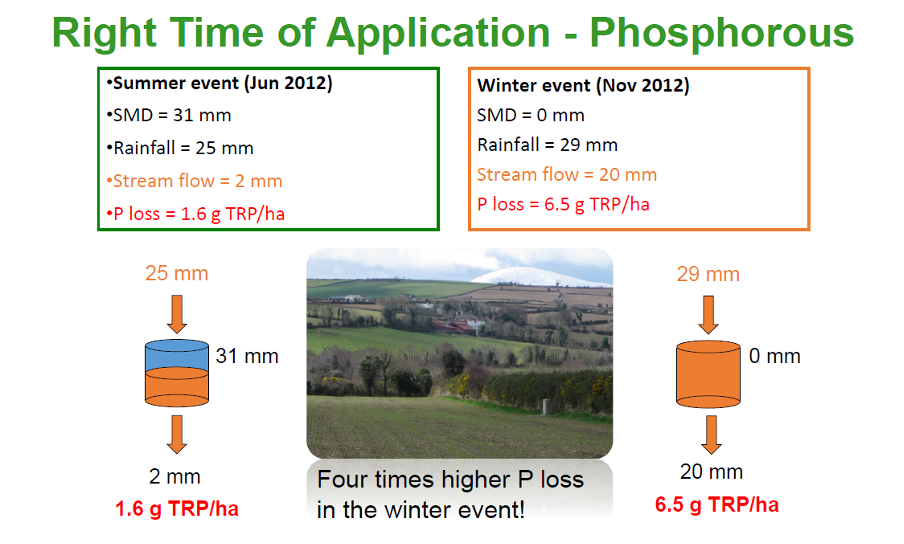Timing of fertiliser crucial to prevent P loss

Heavy rainfall events that create potential Phosphorus (P) run-off are becoming more common and challenging, Eddie Burgess from the Agricultural Catchments Programme with Teagasc has said.
Resolving P problems is more difficult now than it was 15 years ago when he first started working in the Slaney catchment. That has nothing to with farming practices but more intense weather patterns, he said as he addressed tillage advisors and agronomy team members in the Slaney catchment area.
Mr Burgess shared advice on reducing nitrate leaching and phosphorus run-off in what the Environmental Protection Agency (EPA) has classified “a catchment of concern” through its water testing programme.

Pictured Above: Eddie Burgess, Pat Murphy and David Wall pictured at the workshop in Enniscorthy.
“Two heavy rainfall events in the Slaney region in recent years saw up to 20 per cent of the annual P leave the area in one day alone in one case and an amount matching all of the annual P loss happened in the other flooding event.
“Soil conditions make a massive difference. When we talk about ‘breaking the pathway’, most people will automatically think about putting in a buffer strip, leaving an area non fertilised or maybe putting in a ditch or hedge – a physical barrier.
“A far more effective way is to look at the time of year you have fertiliser going out. If the soil has the capacity to soak it (rainfall), then much less of it is going to run off. Timing of application is, in my mind, a more important way of breaking the pathway.
“Slurry storage is a major problem and we’re all well aware of it. If someone invested money in surplus slurry storage, they have put in a lot of investment and it will solve problems and be done forever after.
“The amount of P that will cause a problem to the ecological status is irrelevant from an agronomic point per view. I would love to be able to say to every group that I talk to, next year will you please spread one less unit per acre to resolve issues and that would be the job done.
"If everyone spread one unit less next year, it won’t make a difference. And if they spread 5 units less but did it at the wrong time it won’t make a bit of a difference. Very small amounts of P cause problems.
“The areas where P is problematic tends to coincide with where you have heavy soil. P accumulates and binds the clay particles and organic matter. It binds the soil. If water is carried in the nutrients and it percolates through the soil, and the P is in the water – either dissolved or tiny particles of it are percolated through the soil – it’s like a magnet. The negative charge in the soil attracts the P and it will hold on to it. It filters the P out of the water and it continues to percolate back out through the soil. If water is flowing across the surface, it will carry particles with it that has P attached.
“The quickest way of fixing that problem is probably not cutting the amount of P that goes out but rather breaking the pathway that carries the P. A lot of the focus on improving river water quality is about breaking this pathway. The problem on lakes is that it can sit there until the next Summer. In a river, it moves on.”
Where the risk of phosphorus loss is high, usually the threat of nitrogen loss isn’t. Where P causes a problem, N doesn’t, and vice versa. But when the risk of P loss is high coincides with when the risk of N loss is high.
Some problems associated with P losses can be sorted quickly, with a single action and the job is done forever after. But other problems will take multiple generations to be resolved.

First Published 14 March 2024
